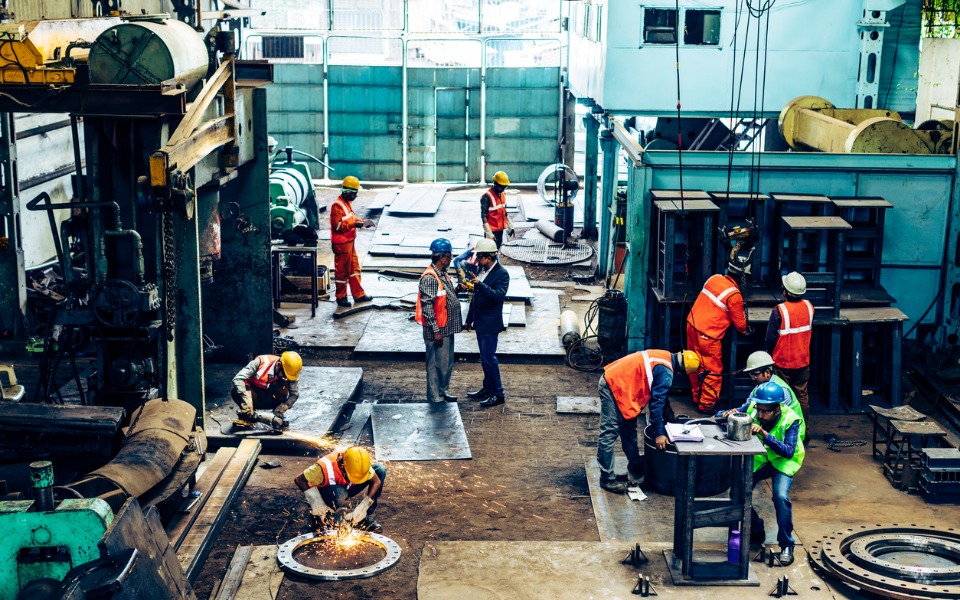
After stable December, needle dips on some economic indicators
There are signs of slowdown in some industries, reveal data; third wave of COVID may weigh on the indices in Jan

As 2021 closed down, the nation’s key economic indicators remained more or less stable. Yet, there were early signs of slowdown in some segments, which could have intensified this month because of the onset of the third wave of COVID. Considering the economy is just getting back on its feet after two waves of the pandemic and associated lockdowns, the central bank is likely to retain an accommodative bias in its monetary policy, said a Bloomberg report.
Citing its economic activity tracker that covers “eight high-frequency indicators”, Bloomberg said some of the indicators show stability while the others hint at weaknesses.
Business activity expands
The nation’s services sector expanded for the fifth month in a row, while the manufacturing sector expanded for the sixth month. This was despite some loss of growth momentum in new work and production, said Bloomberg citing IHS Markit’s PMI (purchasing managers’ index) data.
Also read: TCS, Infosys rank second & third in Brand Finance 2022 Global 500 report
The composite index fell to 56.4 in December, against 59.2 in November. Any PMI reading above 50 indicates growth, so the December number represents an expansion. The PMI had hit a 10-month high in November; the easing in December could be due to concerns over the Omicron variant that had just set in.
“Companies continued with their stock-building initiatives, as evidenced by another robust upturn in buying levels. Business confidence strengthened, but sentiment was again dampened by concerns surrounding supply-chain disruptions, Covid-19 and inflationary pressures,” said IHS Markit, a data analytics firm.
Industrial production edges up
India’s industrial output — as measured by the Index of Industrial Production (IIP) — grew at 1.4% in November 2021. Factory or industrial output is seen as one of the closest approximations to measure business activity in an economy.
Also read: COVID pain: MGNREGA is just what the doctor ordered, but needs more funds
The manufacturing sector, which accounts for 77.63% of IIP, grew 0.9% during the month. While the mining sector’s output grew 5%, that of power generation rose 2.1%. Overall, the IIP stood at 128.5 points in November 2021, against 126.7 points in the same month of 2020.
The production of capital goods, which is regarded as an indicator of investment, contracted 3.7% in November 2021. In November 2020, it had contracted 7.5%.
Exports at all-time high
Even as domestic sales remained more or less flat, exports zoomed by 39% year-on-year in December 2021 to $37.8 billion. This marked the highest monthly tally, and was largely fuelled by electronics, commodities, and chemicals. The demand for petroleum and engineering products, and gems and jewellery also soared last month.
Merchandise exports hit $300 billion in April-December — an increase of around 49% year-on-year and 26% against the same period in 2019. The country achieved three-fourths of its annual export target of USD 400 billion in the April-December period in 2021-22.
Yet, the nation’s trade deficit widened in December as the growth in imports surpassed the growth in exports. The trade deficit climbed to $22 billion last month, against $15.75 billion in December 2020.
Mixed bag in consumer activity
Demand for bank credit grew 9.2% at the end of December 2021 from the year-ago period, Bloomberg data revealed. Liquidity conditions remained in surplus.
The December data reflect the robust credit growth in the third quarter of this fiscal. Contrasting the ₹3.5 lakh-crore credit growth was the ₹2.2 lakh-crore decline in deposits. This could indicate corporates’ plans for capacity expansion across sectors, said an SBI Research report. Bank credit growth was also driven by personal loans.
However, passenger vehicle sales, another key indicator of consumer activity, fell for the fourth straight month in December. A global chip shortage impacting production was seen as the reason for this.


